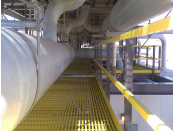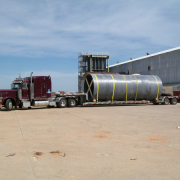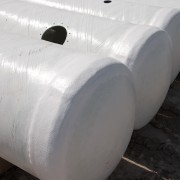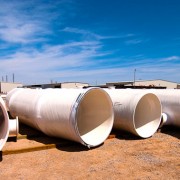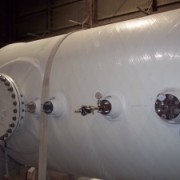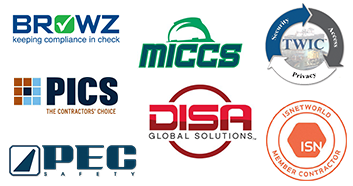What is an FRP Corrosion Barrier?
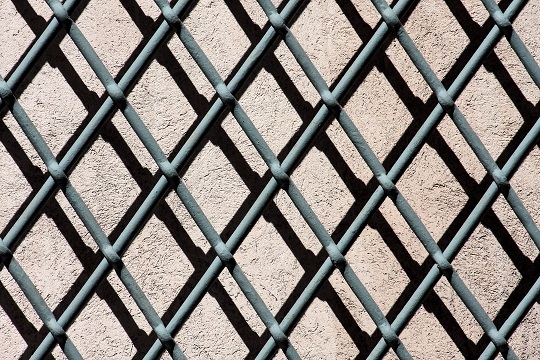 Fiber Reinforced Polymers (FRP) are well known for their abrasion and corrosion resistant properties. FRP are a composite material; they combine two or more different constituents into a one unique material; resins and fibers combine to yield a finished composite product. Fibers contribute the majority of the strength to finished product while resins provide corrosion resistance and channel stress to the fibers. There are two broad families of resins—thermosetting and thermoplastic. In the case of fiberglass and FRP we are referring to thermosetting resins. Thermosetting resins cure to produce an infusible material that does not melt when heated. Conversely, thermoplastic materials have a definite melting point.
Fiber Reinforced Polymers (FRP) are well known for their abrasion and corrosion resistant properties. FRP are a composite material; they combine two or more different constituents into a one unique material; resins and fibers combine to yield a finished composite product. Fibers contribute the majority of the strength to finished product while resins provide corrosion resistance and channel stress to the fibers. There are two broad families of resins—thermosetting and thermoplastic. In the case of fiberglass and FRP we are referring to thermosetting resins. Thermosetting resins cure to produce an infusible material that does not melt when heated. Conversely, thermoplastic materials have a definite melting point.
Many different laminate types make up a custom laminate schedule. For example the Mat Layer laminate type is commonly used because it creates an excellent structural reinforcement, good wet out characteristics, sufficient clarity to observe entrained defects; various glass fiber mats are selected depending on the application and service conditions. Other examples of laminate types are corrosion barrier, inner wall and structural wall. In addition, there are multiple laminate construction methods such as contact molded, filament wound, vacuum infusion, centrifugal, and pultrusion—to name a few.
The corrosion barrier, also sometimes referred to as the corrosion liner, is typically a combination of one or multiple plies of resin-saturated C glass or synthetic veil against the process surface, followed by two or more plies of mat. Each resin rich layer acts as a defense against chemical attack; generally speaking layers vary from 75%-90% resin by weight, however formulations may vary depending on design specifications. For example, the corrosion barrier and structural layer will vary in thickness depending on the intended use (i.e. aggressive chemical environments and elevated temperatures).
Typical Functions of the Corrosion Barrier
- Corrosion resistance
- Abrasion resistance
- Chemical resistance
Although it is not always the case high quality FRP products are generally made using polyester or vinyl ester resins which posses great thermal, physical and corrosion resistance properties. You should always discuss resin selection with a resin manufacturer or your engineering team. Corrosion liner or barrier considerations and resin selection are extremely important to the overall design of your composite product.


